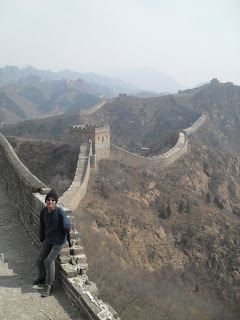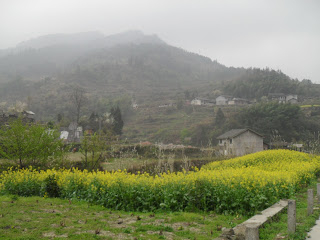

Shanghai is China’s “New York” and thus is its wealthiest city. The city is blessed with a rich history, evidenced in the old and new buildings.
When I was visiting Shanghai, the city was gearing up for Expo 2010, a world-class event with almost 200 countries building pavilions. Because of this huge event, security had been ramped up everywhere, as seen in the X-ray scanners at each subway station.
Shanghai is racing ahead into the future at lightning speed. There is construction everywhere. Everyday, new sections of freeways, apartment blocks, skyscrapers and subway lines are being added. The most conspicuous evidence of this is in Pudong, the business district by the Huangpu River. Pudong is dominated by skyscrapers, which include the Oriental Pearl TV Tower, the Jinmao Tower and the Shanghai World Financial Centre. These buildings are beautifully lit up at night, which can be seen across the Huangpu on the Bund. New shopping centers also abound in Shanghai, including those lining Nanjing Rd. and Sichuan Rd.
The Shanghai of the past is equally attractive. Elegant concession-era buildings line the Bund, the avenue adjacent to the Huangpu River. Throughout the city center, there are quaint shuttered European-style homes. Emphasizing the importance of historical preservation, the government has restored several old neighborhoods and transformed them into tourist hot spots. These areas include Shanghai “Old Street”, Xintiandi, Tianzifang and Duolun Street. I enjoyed the outdoor atmosphere of these areas--people have utilized the old courtyards by socializing and dining.
The food in Shanghai is among the best in the world. On my last day, I went to a popular restaurant to eat xiao long bao (steamed pork dumplings with soup inside) and xian jian bao (pan-fried pork dumplings with soup inside). These were scrumptious and I will be sure to be back in Shanghai to dine on some more!
When I was visiting Shanghai, the city was gearing up for Expo 2010, a world-class event with almost 200 countries building pavilions. Because of this huge event, security had been ramped up everywhere, as seen in the X-ray scanners at each subway station.
Shanghai is racing ahead into the future at lightning speed. There is construction everywhere. Everyday, new sections of freeways, apartment blocks, skyscrapers and subway lines are being added. The most conspicuous evidence of this is in Pudong, the business district by the Huangpu River. Pudong is dominated by skyscrapers, which include the Oriental Pearl TV Tower, the Jinmao Tower and the Shanghai World Financial Centre. These buildings are beautifully lit up at night, which can be seen across the Huangpu on the Bund. New shopping centers also abound in Shanghai, including those lining Nanjing Rd. and Sichuan Rd.
The Shanghai of the past is equally attractive. Elegant concession-era buildings line the Bund, the avenue adjacent to the Huangpu River. Throughout the city center, there are quaint shuttered European-style homes. Emphasizing the importance of historical preservation, the government has restored several old neighborhoods and transformed them into tourist hot spots. These areas include Shanghai “Old Street”, Xintiandi, Tianzifang and Duolun Street. I enjoyed the outdoor atmosphere of these areas--people have utilized the old courtyards by socializing and dining.
The food in Shanghai is among the best in the world. On my last day, I went to a popular restaurant to eat xiao long bao (steamed pork dumplings with soup inside) and xian jian bao (pan-fried pork dumplings with soup inside). These were scrumptious and I will be sure to be back in Shanghai to dine on some more!













